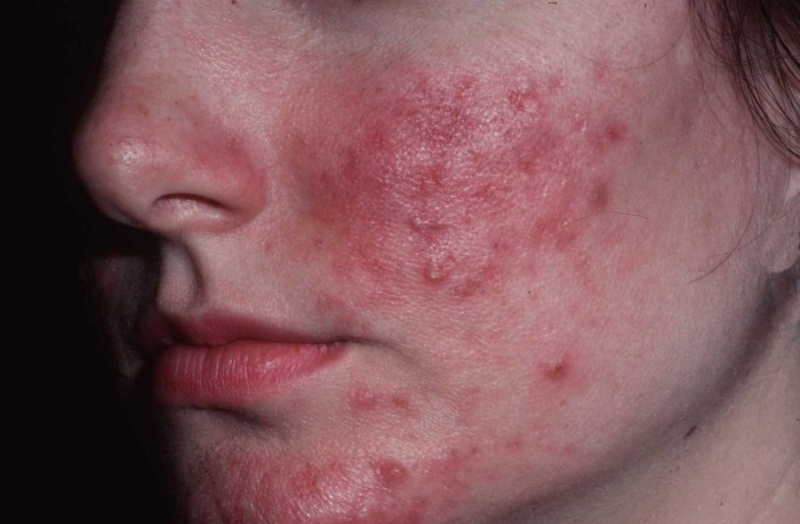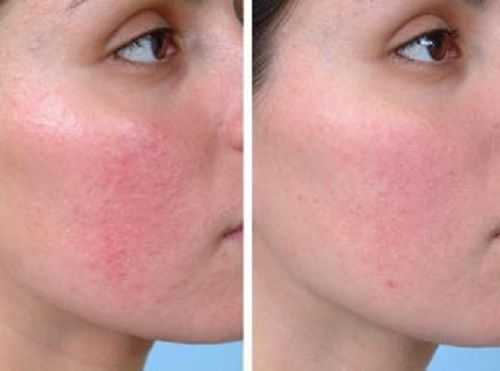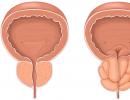Rosacea: causes, symptoms, treatment
People over the age of 30 are increasingly experiencing various manifestations of skin conditions such as rosacea. It begins with the formation of short-term redness in the nose and cheeks, then the symptoms begin to worsen, causing more and more discomfort and inconvenience. The disease gradually becomes chronic.
Rosacea is a chronic, relapsing skin condition. Its main symptom is the appearance of rosacea, small inflammations and rashes, redness, areas of peeling and irritation. Very rarely, skin rosacea can affect the skin and mucous membranes of the eyes, causing keratitis and a sharp decrease in vision.
Specialist doctors also often give this disease the definition of "rosacea" and refer to pathologies of a strictly neurological nature. This is due to the fact that, as a rule, rosacea occurs with various lesions of the trigeminal facial nerve, which provides the ocular, upper and mandibular innervations.
Rosacea is not a bacterial or viral disease and is therefore not contagious.
Causes
At the moment, the cause of rosacea is not fully understood. Specialist doctors put forward several assumptions about what exactly can provoke skin lesions with rosacea:
- Entry into the body substances that cause vasodilation of the skin and increasing their permeability. Since rosacea begins with the formation of redness and a rush of blood to the affected areas, dermatologists have put forward the theory that disruption of the circulatory system of small capillaries under the skin of the face provokes disruption of the skin, deterioration of the epithelial cover and the formation of multiple inflammations and dermatoses.
- bacterial impact. The appearance of pustular tubercles under the skin indicates the activity of pathogenic microorganisms. It was also noticed that with the use of antibiotics, the symptoms of rosacea are noticeably reduced and appear much weaker, but the pathogen itself has not been identified by any of the modern methods of analysis.
- Infection with skin mites of the genus Demodex. This theory was confirmed by skin tests of some patients, as a result of which mites were found in the collected materials. However, not all patients suffering from rosacea were infected with mites, so this theory was not subsequently confirmed. There is an assumption that ticks simply took advantage of a decrease in overall immunity and resistance of the skin and attacked the most vulnerable areas. Thus, this manifestation of pathology was brought into a separate type of disease, describing it as rosacea-like demodicosis.
- genetic predisposition to the development of the disease. The hereditary factor plays an important role in the development, density, resistance of the skin to pathogenic factors of the internal and external environment. A large number of medical literature describes many familial cases of the disease.
- Pathologies of the digestive system. Skin health directly depends on the state of the gastrointestinal tract. Dermatologists note that people suffering from acute or chronic inflammatory processes in the stomach or intestines are most susceptible to facial skin rosacea.
- Eating poor quality products and allergic reactions. Constant eating of food that irritates the stomach and intestines, as well as provoking the activity of cells responsible for the immune allergenic response, leads to the formation of various chronic inflammatory processes on the skin, including the development of rosacea.
- Increased innate sensitivity of the skin and vascular permeability.
- Taking medicines, adversely affecting the health of the skin. These drugs include some types of antibiotics, immunostimulants, heart drugs, as well as female hormonal contraceptives. These drugs are characterized by the fact that they provoke the body to change stabilized metabolic processes. Such changes can affect the skin in the form of inflammation, rashes, violations of the protective layer.
- Theory of disorders of the nervous system. Many doctors talk about a direct connection between the psycho-emotional state of the patient and the health of his skin. It has been proven that inflammation of the epidermis often indicates the presence in a person's life of an excessive amount of unrest and stress.
- Violations of the humoral regulation of the body. The lack of one and the excess of other hormones leads to numerous chronic malfunctions in the functioning of the vital organs and systems of the patient, including skin health can be seriously affected. Hormonal disorders lead to the appearance of ulcers, tubercles, peeling and itchy rashes.
Important! Most often, rosacea occurs due to the combined action of pathogenic factors on the patient..
Rosacea classification
Rosacea is classified into degrees of severity, which also correspond to the stages of the disease:
- RosaceaI. It is characterized by the persistence of congestive erythrema for several hours. Redness and small foci of small acne rashes form on the skin of the nose, forehead, in the nasolabial triangle and on the cheeks. Redness and peeling are noticeable on the skin and are difficult to hide with cosmetic decorative products.
- RosaceaII. Extensive proliferation of the inflammatory process in the skin, the formation of papules, pappulopustules and pustules that can remain inflamed and sore for several days. In some cases, slight swelling is provoked. Small colonies of pathogenic microorganisms can be found inside the subcutaneous formations. The pores are not clogged, the skin does not scar at the site of the formation of the inflammatory process. In the future, if left untreated, the disease affects the forehead to the hairline, neck, space behind the ears.
- RosaceaIII. Significant progress of inflammation, the formation of nodes, plaques, small subcutaneous hematomas, dense areas of clogged pores, noticeable peeling, peeling of the skin, scars. The main sign is the development of large, typical for the severe stage of the tubercles - "fim". Skin with large pores, very thick, reminiscent of citrus peel. Most often, fimas affect the chin and nose.
Note! In the absence of appropriate treatment, when the first signs and symptoms of rosacea appear, the disease develops easily. each subsequent stage is much more difficult to treat than the previous one.
Signs and symptoms of the disease
The manifestations of rosacea are very noticeable, difficult to confuse with any other skin disease, as they develop gradually, in conjunction with the characteristic skin color and progress at each stage of the disease. 
Dermatologists refer to the main signs of rosacea:
- persistent redness on the skin of the cheeks, face, chin and nose. The more severe the stage, the greater the area covered by the redness of the patient's epidermis;
- small vessels begin to appear under the skin, you can see with the naked eye irritability and serious destructive disturbances in the capillary network;
- subsequently, characteristic pinkish rashes are added to the redness, gradually transforming into painful acne filled with pus;
- at the sites of inflammation, the skin becomes thick, bumpy and dense. The cells expand so much that the pores become clearly visible, easily clogged;
- sometimes rosacea can affect the skin and mucous membranes of the eyes, in such cases they are very watery, there is redness and peeling of the eyelids. Patients complain of foreign body sensation in the eye.
In addition to the above symptoms, there may also be signs that are characteristic of diseases that provoked the appearance of rosacea, for example, hormonal disorders, an inflammatory process in the stomach, or insufficient blood supply.
Diagnosis of rosacea
Rosacea is a fairly simple disease to define. As a rule, it is enough for a specialist doctor to carefully examine the patient in order to recognize the characteristic signs, determine the stage of the disease and begin treatment. Analyzes are taken mainly in order to establish the cause of skin inflammation and only in cases where the patient has not previously suffered from pathologies of the cardiovascular, hormonal or digestive systems.
Treatment
The composition of the drug treatment for rosacea is selected by a specialist dermatologist. It will depend on the stage of development of the pathology, the age of the patient, his individual characteristics and his own preferences.
In order to recover from rosacea, you need to use complex therapy to get rid of pathology. Both creams and ointments for topical use and preparations for oral administration are prescribed.
Most often, tablets are prescribed containing small doses of antibiotics that affect skin pathologies (metronidazole, chloramphenicol) that are not dangerous for other organs and systems. In cases where the disease was provoked by a chronic internal disease, drugs are prescribed to restore the normal activity of the affected organs: antihistamines (Desal, Claritin) to get rid of an allergic reaction, antibiotics that act on the Helicobacter bacterium (Klacid, Klabaks) in inflammatory processes of the gastrointestinal tract. intestinal tract. For an additional effect on the walls of the facial capillaries, vitamins that affect the strength and elasticity of blood vessels, such as Askorutin, are required to be taken.
Ointments with natural and chemical antiseptics (salicylic, ichthyol), hormonal components that help normalize metabolic processes in the skin (Akriderm GK, Hyoxysone) or antibiotics that completely destroy inflammatory processes of a bacterial nature under the skin (Metronidazole, Tetracycline ointment) are used externally.
Folk remedies
In order to cure rosacea, it is better to turn to traditional medicine methods in order to quickly stop the causes and not provoke an allergic reaction that contributes to the progress of the pathology. For an additional effect, you can use lotions and decoctions of medicinal herbs containing an antiseptic component, such as chamomile, sage, calendula and mint. Regular use of such a decoction after cleansers, as well as rubbing the skin with ice cubes, will help strengthen the walls of blood vessels, restore metabolic processes, cleanse pores and improve complexion. 
Prevention
Preventive measures to maintain skin health are extremely simple:
- do not use aggressive cleansers and irritating decorative cosmetics;
- avoid anxiety and stress;
- monitor skin hygiene and cleanliness of the face;
- normalize the diet and composition of the daily menu;
- closely monitor health and take medication on time in the presence of chronic internal pathologies;
- contact a specialist doctor in case of rashes and peeling, without trying to cure them yourself.
Proper skin care and careful treatment of your health will help maintain a good complexion, attractiveness and excellent health for a long time.
A specialist dermatologist talks about the factors that provoke the formation of rosacea on the skin and methods for preventing the disease.






